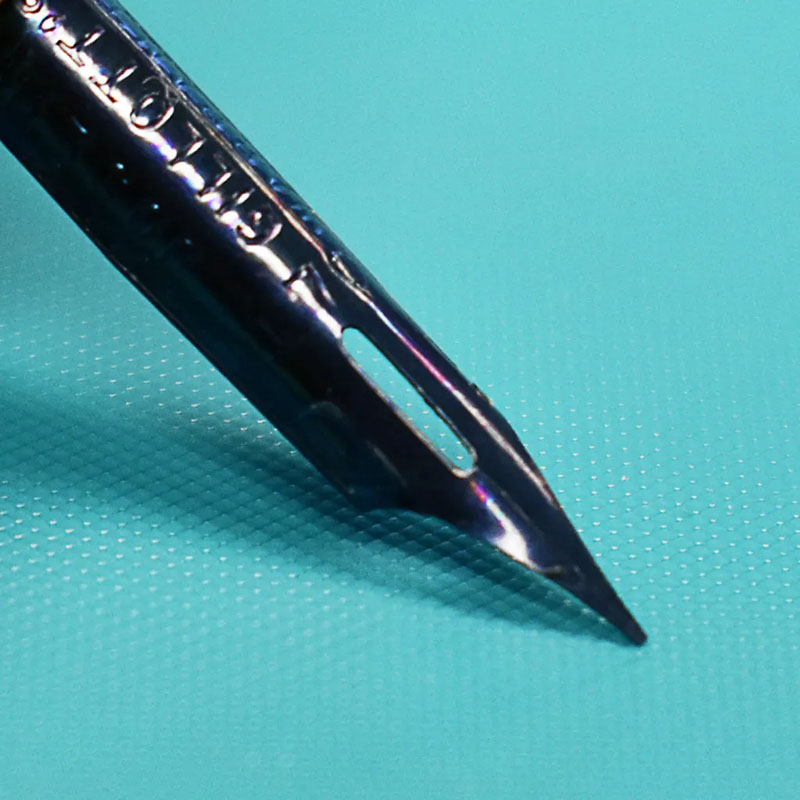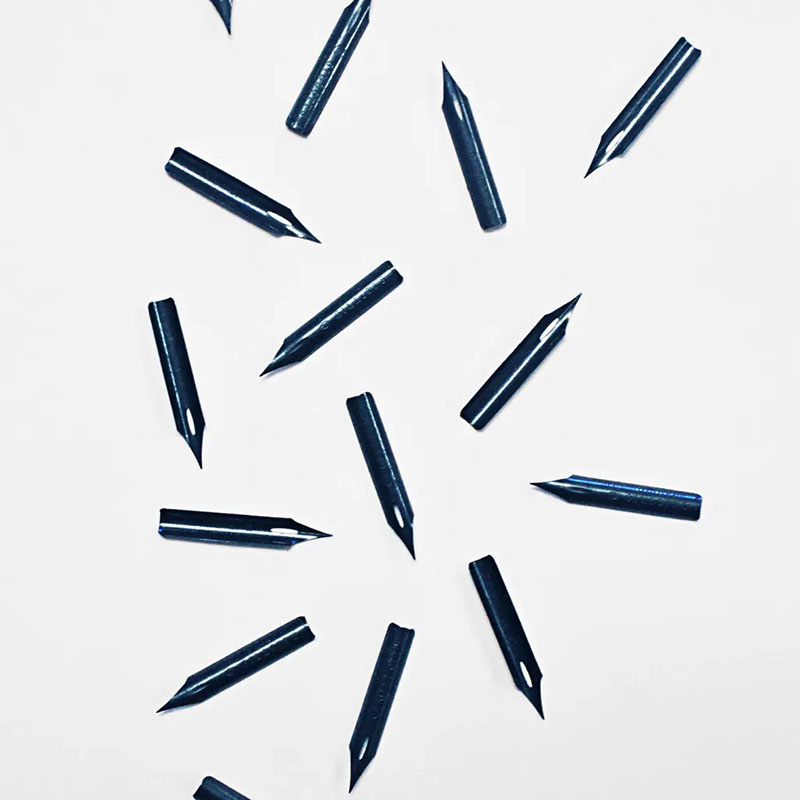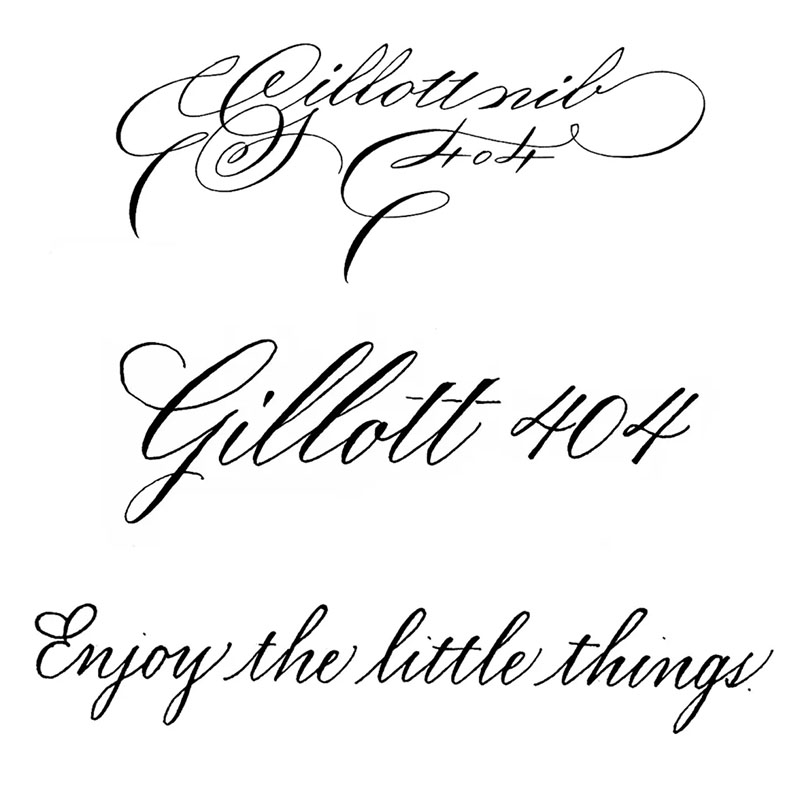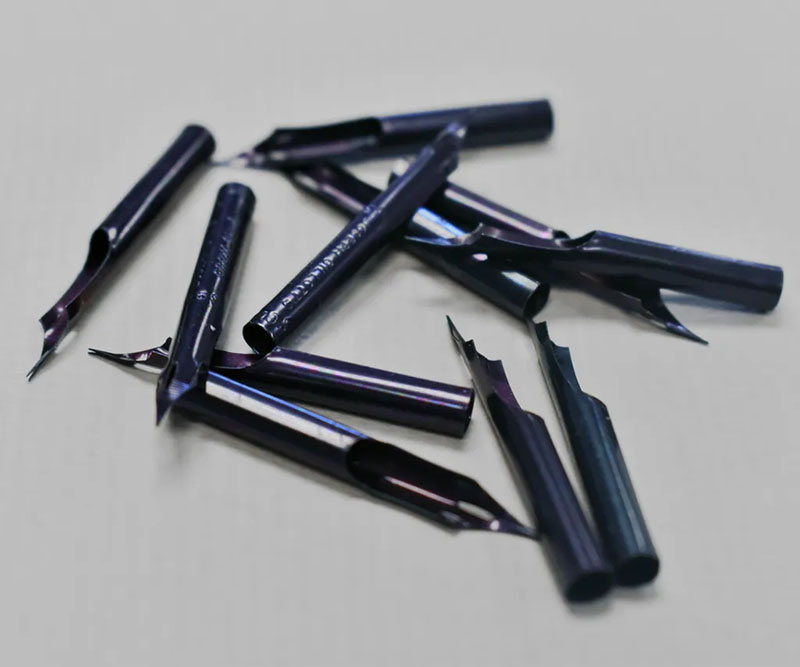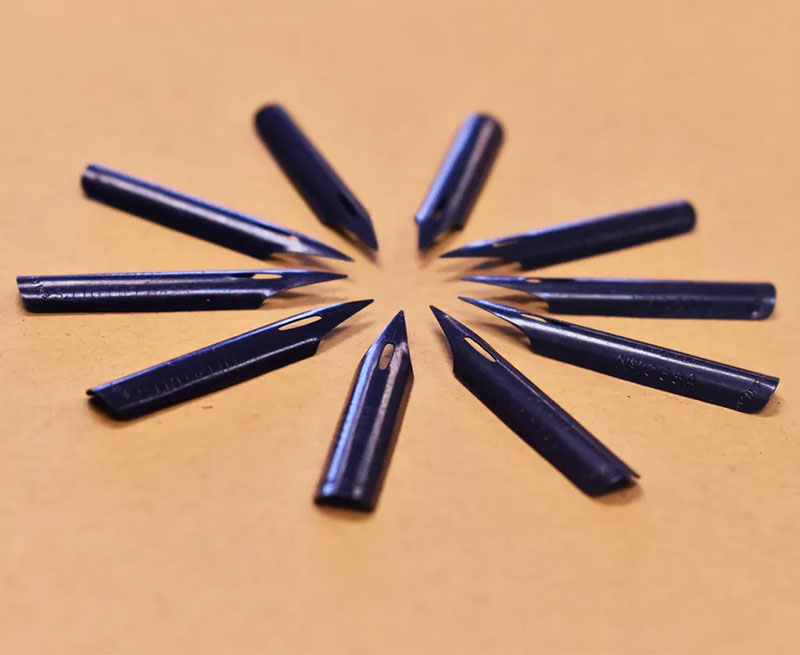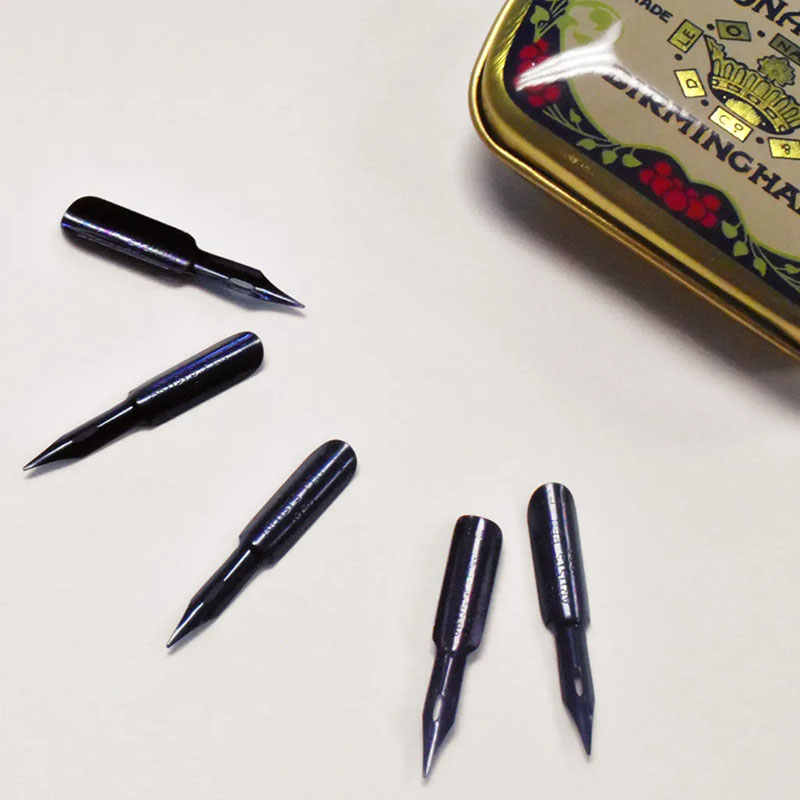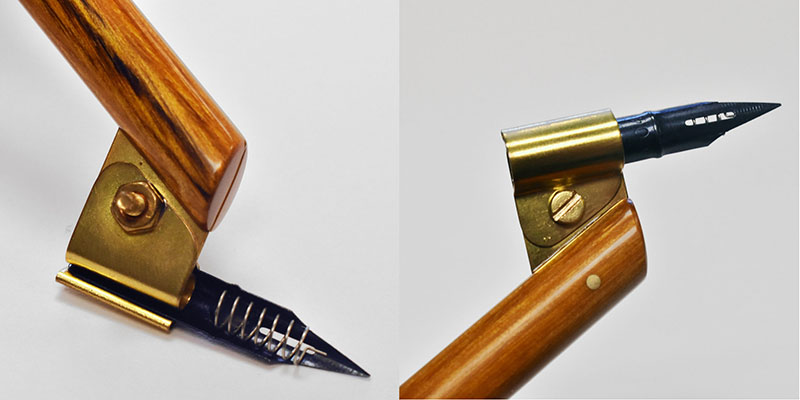
Gillott Nibs
Posted by Sarah @ PIA on Jan 31st 2023
We're giving you a detailed look at every Gillott nib! These high-quality dip pens were first manufactured in Birmingham, England in 1827 by Joseph Gillott. Gillott nibs still remain popular for pointed pen calligraphy today.
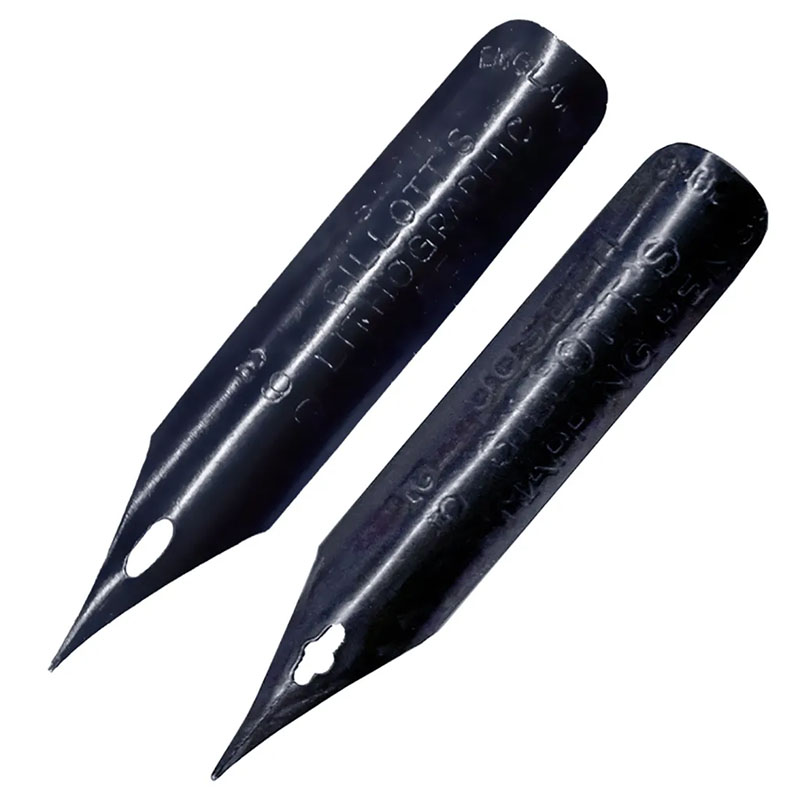
First we'll compare two similar, often overlooked nibs. The Gillott 290 and 291 are very similar, save for a few key differences. Both nibs are small and delicate, and can easily be damaged if too much pressure is applied. The 291 is slightly more durable, and will stand up to more pressure without breaking. However, a light touch is still recommended. Both the Gillott 290 and 291 produce exceptional hairlines, but the 291 is better suited for actual script. Both nibs are great for touching up work created by larger pens. These nibs are ideal for intermediate or advanced level calligraphers and are not recommended for beginners.
The Gillot 170 is a moderately flexible nib that is much finer than the Gillott 303 or 404. Although it is less flexible than the 303, it produces comparable hairlines and is much smoother, making it a better choice for use on textured papers. The Gillott 170 is also capable of creating wide swells with a little pressure and a controlled hand. Great for small to medium Copperplate and suitable for Spencerian. This nib is ideal for intermediate or advanced level calligraphers and is not recommended for beginners.
The Gillott 303 is a pointed nib that is excellent for Copperplate calligraphy. This nib has the perfect flexibility: it's not too stiff or too rubbery, although it performs best under a light hand. The 303 is very sharp and is best used on smooth papers, but can operate on lightly textured surfaces under an expert hand. The Gillott 303 is endorsed by Eleanor Winters in her fantastic book, Mastering Copperplate Calligraphy.
The Gillott 404 is a stiff pointed nib that is very smooth, performing well on surfaces both smooth and textured. It produces comparable swells and thicker hairlines than the Gillott 170 and 303. The 404 is strong and long-lasting, making it a great choice for beginner calligraphers who have a heavy hand. Depicted are three handwriting samples, each done with the Gillott 404 nib. Artists are as follows, from top: Schin Loong from @openinkstand, Bailey Rivera from @antiquariabailey, and Arney Walker from @arneywalker. Like the Gillott 303, this nib is also endorsed by Eleanor Winters in her book Mastering Copperplate Calligraphy.
The Gillott 659 is a crowquill or mapping nib with a barrel shape and superfine point. This nib was originally designed for draftsmen and lithographers, but is an excellent choice for any pointed pen script, especially Spencerian and Copperplate. The 659 holds more ink than other Gillott nibs, and is also great for retouching work done with larger pens. This nib will only fit in crowquill holders, and is recommended for intermediate to advanced calligraphers, as well as comic book artists and illustrators.
The Gillott 1068a is an extremely rigid nib that requires heavy pressure to create swells. It can perform like a monoline nib if enough pressure is not applied. This nib produces very little line variation. It is suitable for Copperplate calligraphy, and great for Spencerian. The Gillott 1068a is used by Master Penman Bill Lilly for his Engrosser's Script. This nib is ideal for intermediate or advanced level calligraphers and is not recommended for beginners.
The Gillott 1950 is a uniquely shaped, fairly stiff nib. This pen has a small, sharp point plus an expanded end that allows it to fit into standard holders, unlike most extra-fine nibs. Like all sharp nibs, the 1950 does not operate well on textured papers. . The 1950 produces good hairlines and can be used for Spencerian and Copperplate, but performs best as a drawing nib. This nib is ideal for intermediate or advanced level calligraphers and is not recommended for beginners.
The Gillott 404 is also available with an ink cage! Ink cages act like an ink reservoir for a pointed pen nib, allowing for lines and lines of writing without re-dipping. Each ink cage comes permanently attached to the specific nib; they are not removable or reusable. For detailed cleaning instructions and tips and tricks for use, click here to read our blog post all about ink cage nibs.

